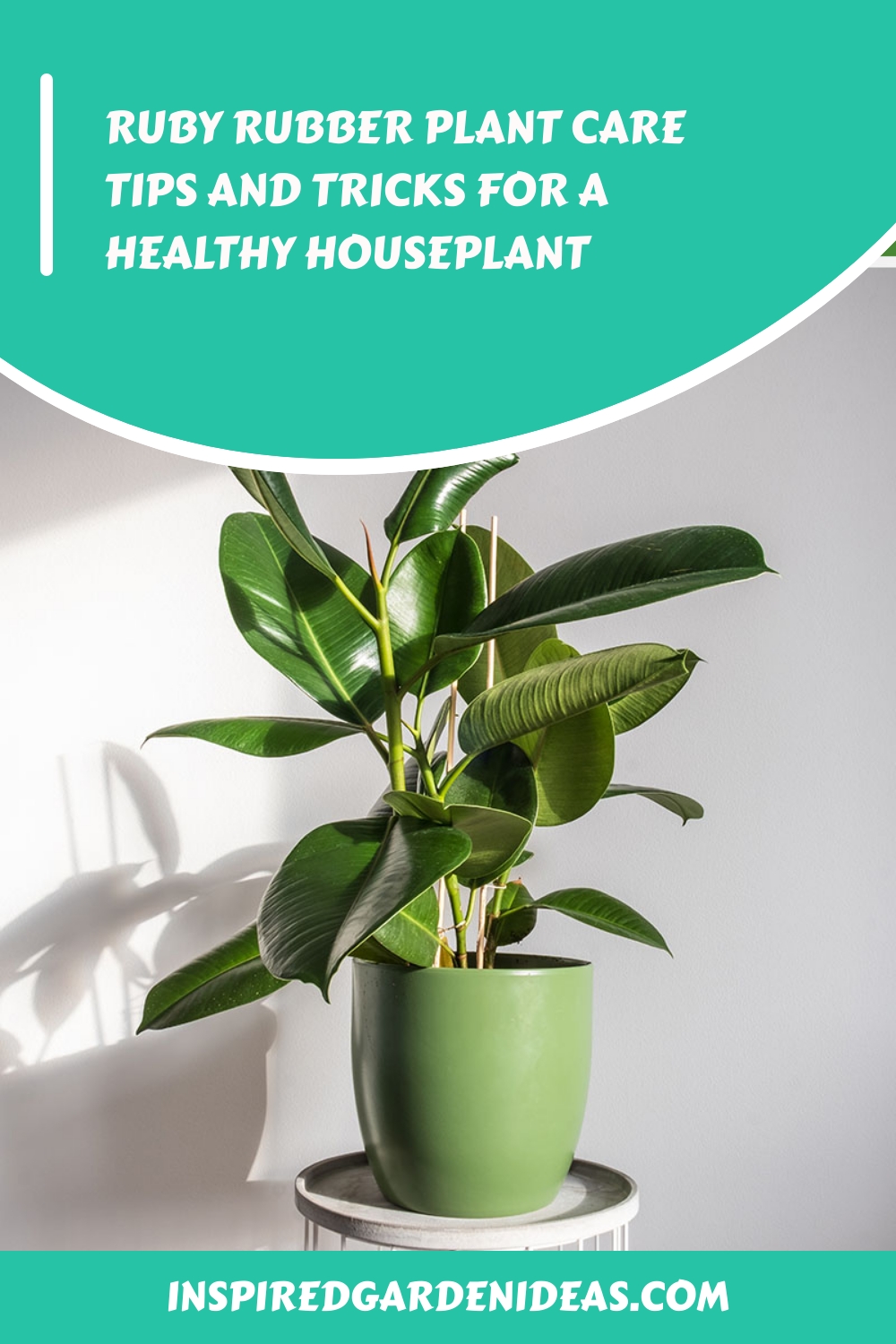Growing indoor plants has become a popular hobby in recent years, and for good reason ruby rubber plant care. Not only do plants add a touch of greenery to your home decor, but they also have numerous health benefits such as improving air quality and reducing stress. One plant that has gained popularity among indoor plant enthusiasts is the ruby rubber plant. With its striking red and green leaves, it’s no wonder why this plant has become a favorite among many. But like any other houseplant, proper care is essential for the growth and longevity of your ruby rubber plant. In this article, we will discuss everything you need to know about caring for your ruby rubber plant.
1. Understanding the Basics of Ruby Rubber Plant
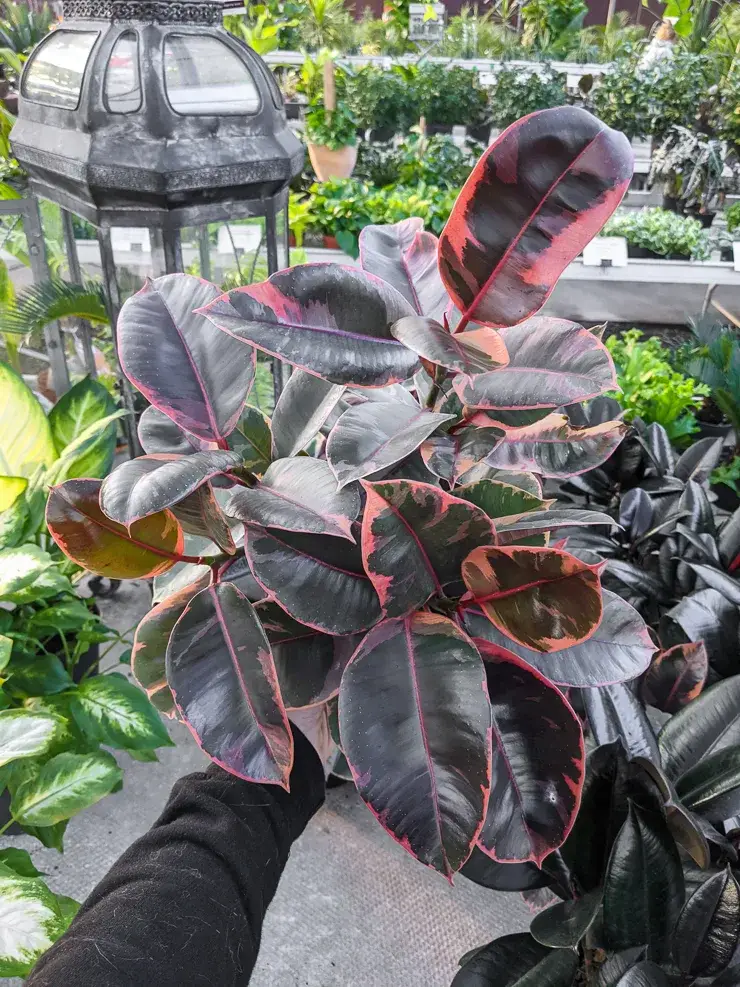
What is a Ruby Rubber Plant?
The ruby rubber plant, also known as Ficus elastica ‘Ruby’, is a tropical houseplant that belongs to the Moraceae family. It is a slow-growing plant with large, glossy leaves that can reach up to 12 inches in length. The new leaves emerge with a bright red color, which eventually fades to dark green as they mature. This unique feature makes the ruby rubber plant a stunning addition to any indoor space.
Light Requirements
One of the most critical factors for the growth of any plant is light. Ruby rubber plants thrive in bright, indirect light, making them perfect for indoor spaces. Direct sunlight can cause the leaves to burn or develop brown spots, so it’s best to keep your plant away from windows or use sheer curtains to filter the light. If your plant is not getting enough light, the leaves may turn yellow and drop. On the other hand, too much light can cause the leaves to lose their vibrant red color. So, it’s essential to find a balance and adjust the plant’s placement accordingly.
Watering Needs
Another crucial aspect of ruby rubber plant care is watering. These plants prefer consistently moist soil, but they don’t like to sit in water. Over or under-watering can harm your plant, so it’s essential to find a watering schedule that works for your specific plant. The best way to determine when to water your ruby rubber plant is to check the top inch of soil. If it feels dry, it’s time to water. During the winter months, you may need to water less often due to reduced light and cooler temperatures.
Fertilizing
Fertilizing your ruby rubber plant can help promote healthy growth and maintain its vibrant colors. Use a balanced liquid fertilizer diluted to half strength every two weeks during the growing season (spring and summer). Stop fertilizing during the fall and winter months as the plant’s growth slows down.
2. Repotting Your Ruby Rubber Plant
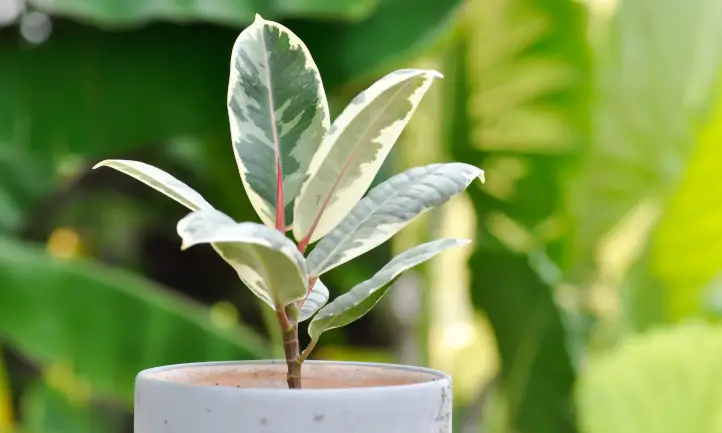
When to Repot
As a slow-growing plant, the ruby rubber plant doesn’t require frequent repotting. However, if you notice that the roots are starting to come out of the drainage holes or the plant looks cramped in its current pot, it’s time to repot. Typically, it’s best to repot your plant in the spring when it’s actively growing.
Choosing the Right Pot and Soil
When repotting, choose a pot that is one size larger than the current one and has good drainage holes. Using a pot with no drainage holes can lead to waterlogged soil, which can eventually cause root rot. As for the soil, a well-draining potting mix with good moisture retention is ideal for ruby rubber plants. You can also add perlite or peat moss to improve drainage.
Repotting Process
To repot your ruby rubber plant, gently remove it from its current pot and carefully loosen the roots. Trim any damaged or circling roots to encourage new growth. Place the plant in the new pot and fill it with fresh potting mix, making sure to leave enough space for watering. Water the plant thoroughly, and place it in a bright, indirect light location.
3. Propagating Your Ruby Rubber Plant
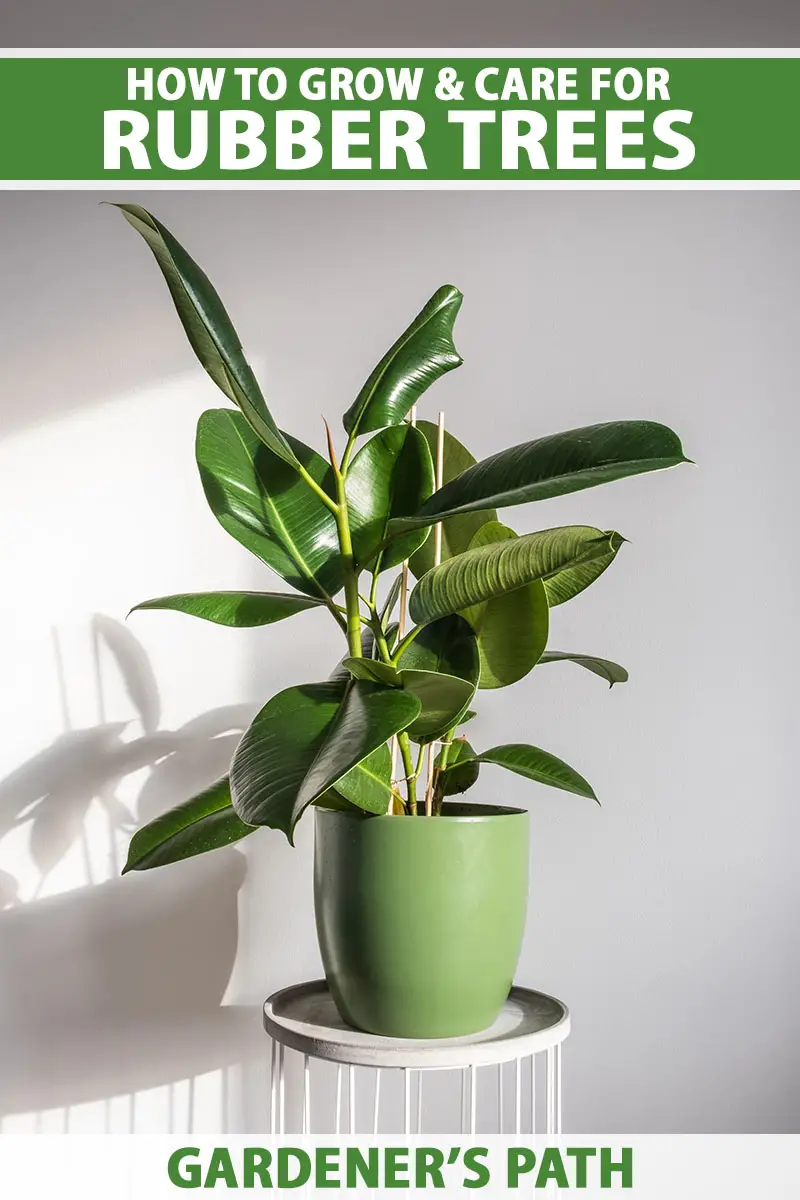
Propagation Methods
There are two main methods of propagating ruby rubber plants – stem cuttings and air layering. Stem cuttings involve taking a section of the plant’s stem and rooting it in water or soil. Air layering, on the other hand, involves creating a root system on the stem while it’s still attached to the plant. Both methods can be successful, but air layering is more reliable and produces faster results.
How to Propagate Using Stem Cuttings
To propagate using stem cuttings, select a healthy stem with at least two leaves and make a clean cut just below a leaf node. Place the cutting in a jar of water, ensuring that the bottom nodes are submerged in the water. Change the water every few days and wait for new roots to grow, which may take several weeks. Once the roots are about an inch long, you can transfer the cutting to a pot of well-draining soil and treat it as a mature plant.
How to Propagate Using Air Layering
Air layering requires a bit more work, but it’s an effective method for propagating ruby rubber plants. To begin, select a healthy stem and make a small incision on the side of the stem, about halfway through. Fill the incision with sphagnum moss or peat moss and wrap it with plastic wrap to maintain moisture. Within a few weeks, you should see roots forming in the moss. When the roots are long enough, cut the stem below the moss and plant it in a pot with well-draining soil.
4. Common Problems and Solutions for Ruby Rubber Plants

Pests
Like most houseplants, ruby rubber plants are susceptible to pests such as aphids, mealybugs, and spider mites. If you notice any signs of infestation, isolate the plant and treat it with a natural insecticide or by wiping the leaves with a mild soap and water solution.
Leaf Drop
Leaf drop can be caused by various factors, including over or under-watering, low humidity, or inadequate light. Make sure to check your watering schedule and adjust accordingly, and consider using a humidifier during dry winter months to maintain adequate humidity levels for your plant.
Brown Spots on Leaves
Brown spots on leaves can be a sign of too much direct sunlight or root rot due to over-watering. Move your plant away from direct light and hold off on watering until the soil is dry to the touch.
FAQs
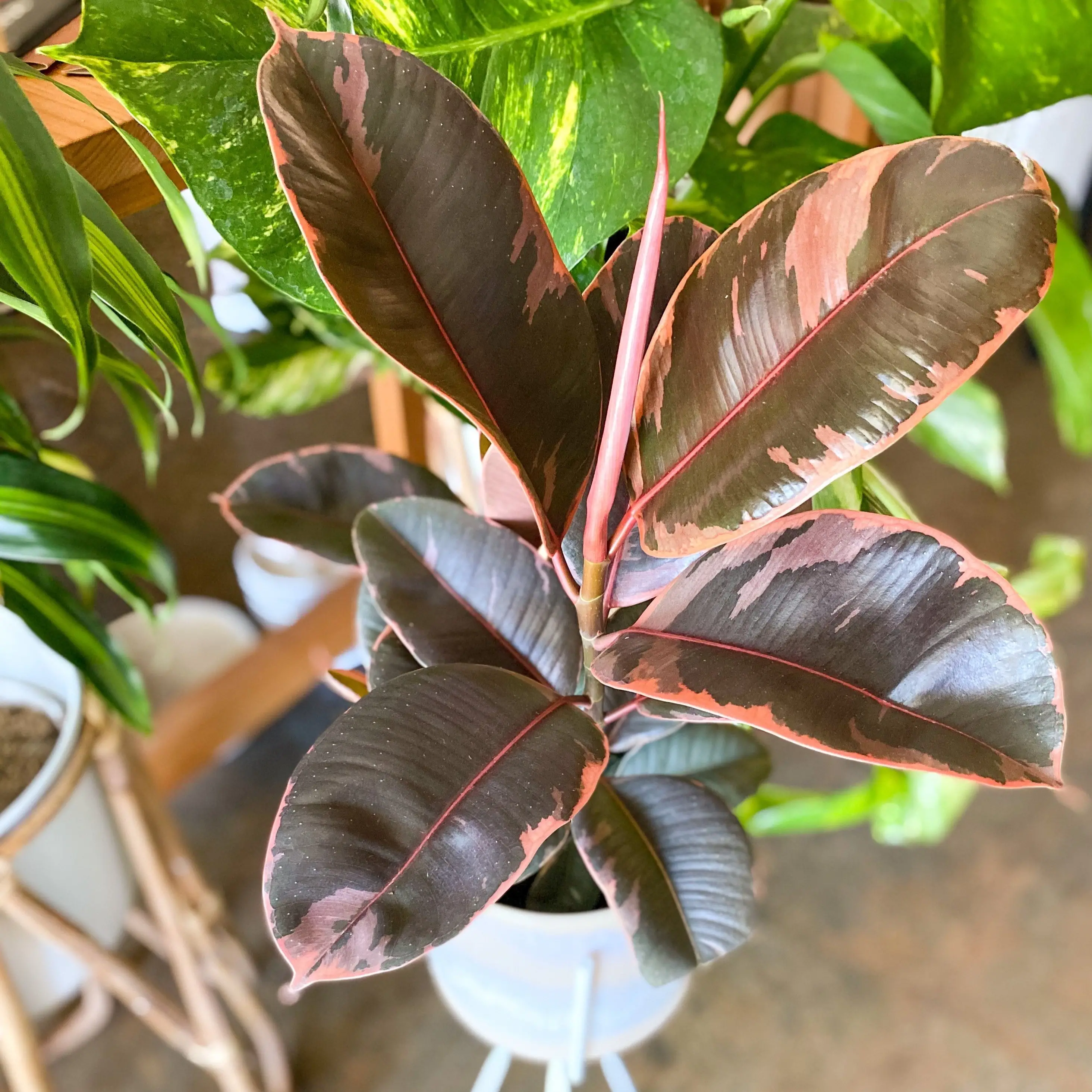
Q: Can I keep my ruby rubber plant outdoors?
A: Ruby rubber plants are best suited for indoor environments, but they can also thrive in outdoor spaces with the right conditions. If you choose to keep your plant outdoors, make sure to protect it from harsh sunlight and cold temperatures.
Q: Why are the leaves on my ruby rubber plant turning yellow?
A: Yellowing leaves can be a sign of over or under-watering, low humidity, or inadequate light. Check your plant’s care routine and make adjustments as needed.
Q: Can I prune my ruby rubber plant?
A: Yes, pruning can help promote new growth and maintain the plant’s shape. Just make sure to use clean, sharp tools and remove any dead or damaged leaves.
Q: How often should I fertilize my ruby rubber plant?
A: Fertilize every two weeks during the growing season (spring and summer) with a balanced liquid fertilizer diluted to half strength.
Q: How do I increase humidity for my ruby rubber plant?
A: You can increase humidity by placing a tray of water near the plant, misting the leaves regularly, or using a humidifier.
Conclusion
The ruby rubber plant is a beautiful and low-maintenance houseplant that can add a pop of color to any indoor space. With proper care and attention, your plant can thrive for many years to come. Remember to provide adequate light, water, and nutrients, and keep an eye out for any potential problems. And with the tips and tricks outlined in this article, you can enjoy a healthy and vibrant ruby rubber plant in your home.


